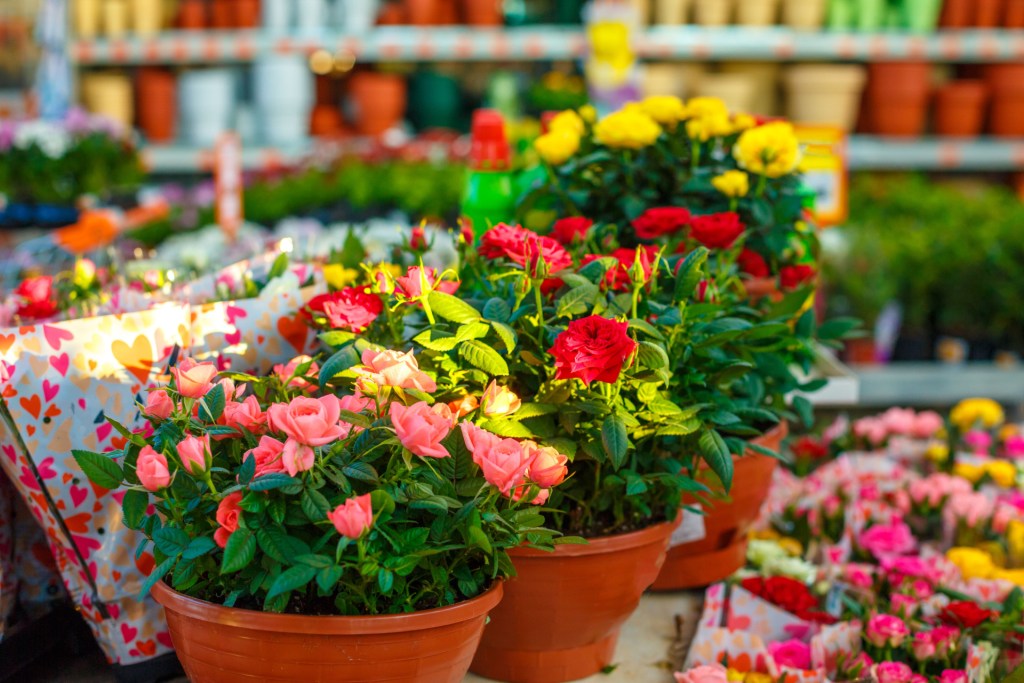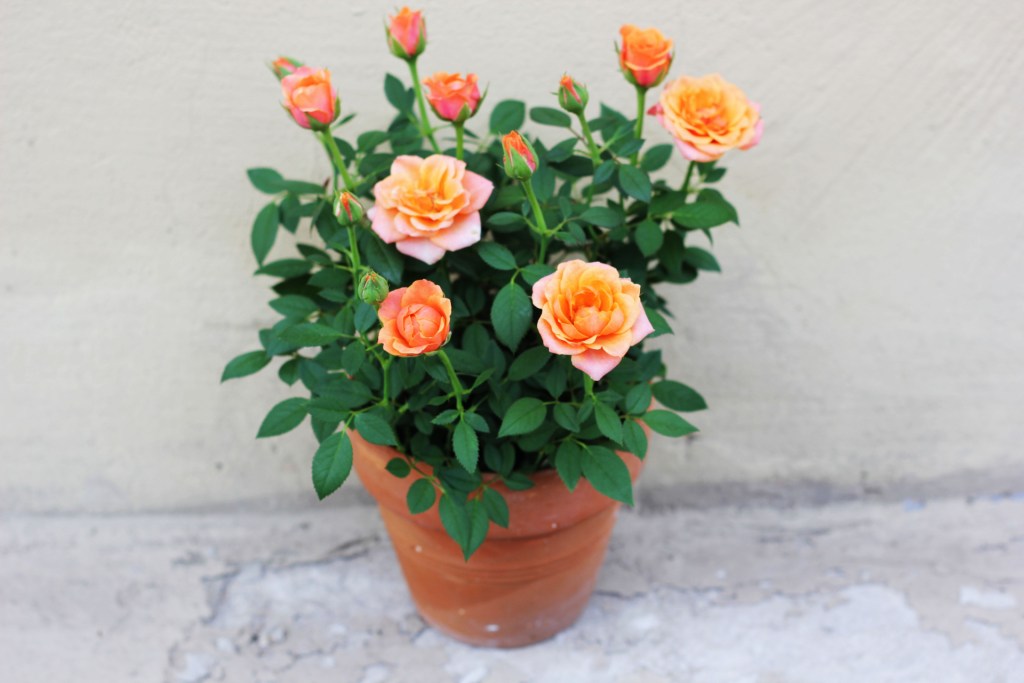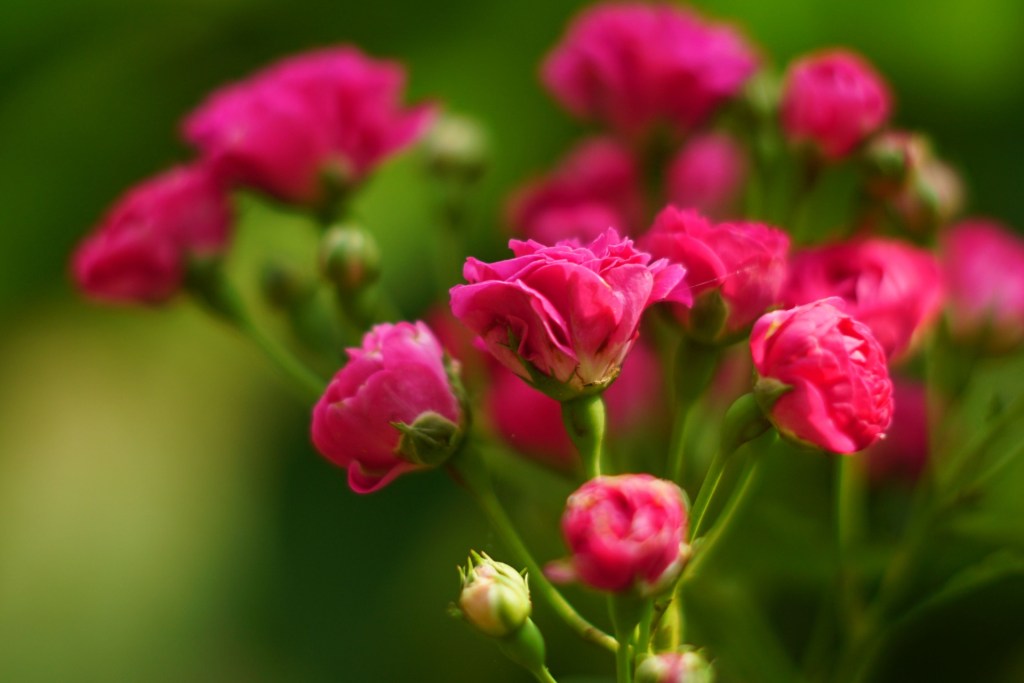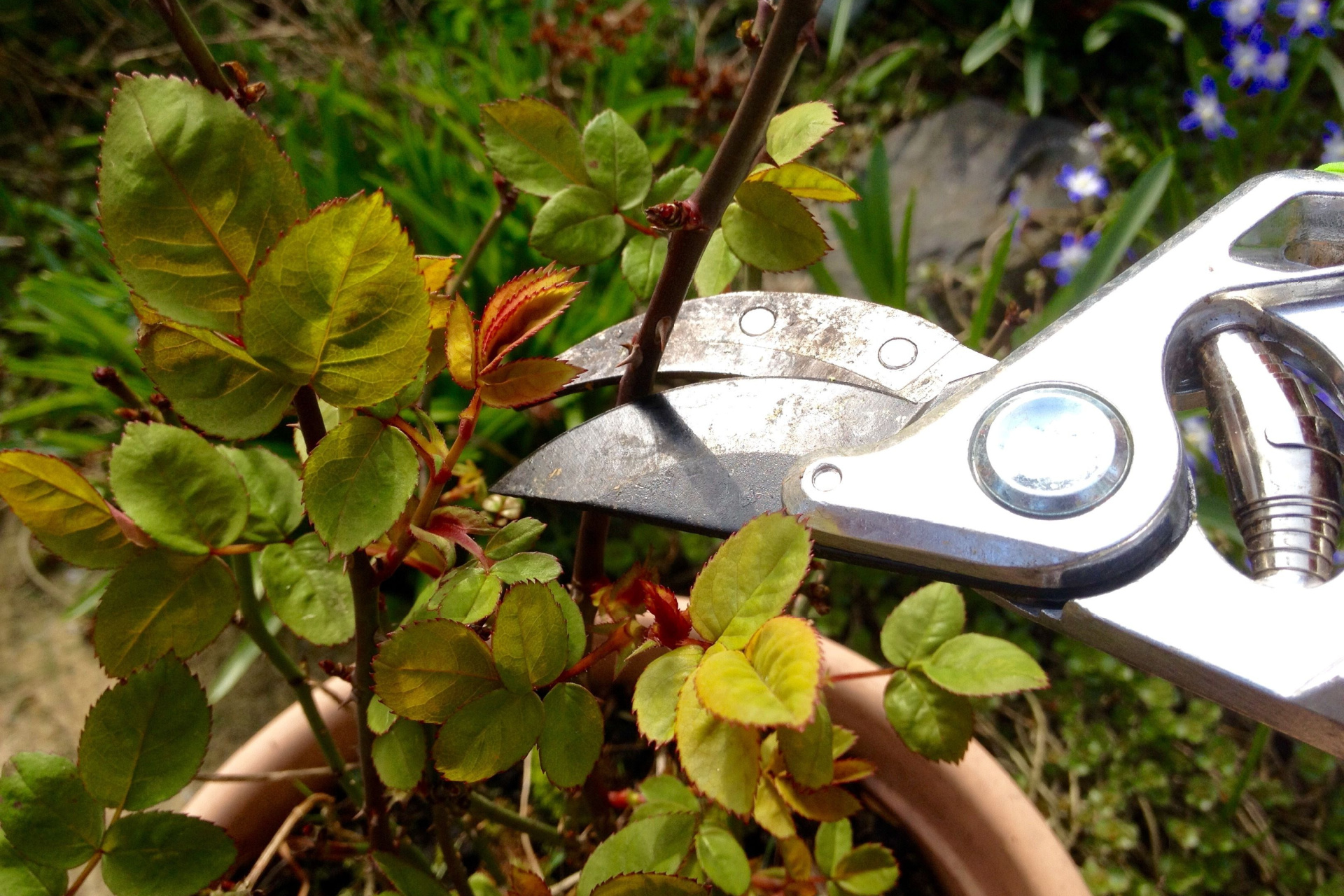Instead of a bouquet of roses that will inevitably fade, why not opt for a lovely potted miniature rose for lush, vibrant blooms down the line? Miniature roses are beloved by floral enthusiasts as one of the few staple rose varieties that you can actually grow indoors. They’re perfect for softening up your space with a gentle, romantic ambiance — as long as you know how to keep them alive.
If you’ve decided to pick up potted miniature roses on a grocery store run or received them as a gift, here’s everything that you need to know about caring for them.

What is a miniature rose vs. a regular rose?
The miniature rose is believed to have come from mutations of the China rose (Rosa chinensis), which is native to the Sichuan, Hubei, and Guizhou provinces in China’s southwestern regions. In contrast with traditional roses, miniature roses are, as their name implies, small.
Their blooms generally measure between 1/2 and 1 1/2 inches wide, and they generally reach between 6 and 12 inches tall in height. While often grown indoors, miniature roses can also be charming additions to beautiful rock gardens, borders, and window boxes outdoors.
When it comes to their shape and growth patterns, miniature roses are fairly similar to traditional roses. They usually feature flowers that can have one circle of petals or multiple. Depending on the variety you get, they can grow as bushes, climbers, or standards.

How to pot miniature roses
Miniature roses are often shoved tightly into nursery planters, so you certainly want to repot them as soon as possible. Repotting is especially important if you want your mini roses to bloom, as root-bound plants won’t produce many flowers. Luckily, situating your miniature rose plant into a new planter is easy.
Step 1: Gently remove your plant from its nursery pot to inspect its roots. Lightly loosen the roots and treat any pests as needed.
Step 2: Depending on how big your root ball is, choose between a 5- or 6-inch planter to situate your miniature roses. Ideally, these pots should be about 10 to 12 inches deep and have a drainage hole.
Step 3: Create a soil-based mixture. You can mix peat moss into a potting mix so your growing medium is nice and light.
Step 4: After adding a bit of potting mix to the bottom of your planter, place your root ball in your container and fill the sides with the remaining potting mix.
Step 5: Thoroughly water your plant.
Step 6: Wait until autumn to repot your plant again. You can also wait until the flowers outgrow their current planter.

Caring for miniature roses
Miniature roses are easiest to take care of when you place them in the ground outdoors, where they’ll get plenty of light and air circulation. However, you can still enjoy fresh blooms in any environment, including indoors, with these miniature rose care tips.
- Lighting: To reach their full potential, miniature roses should be placed outdoors for the most robust blooms. They generally need 14 to 16 hours of bright light a day to produce their lush blooms. If you keep them indoors, it’s important to keep them by a bright, cool window to give them enough light. You could also supplement your plant with grow lights, but make sure to keep your lights no closer than 4 inches above your plant.
- Watering: Allow your miniature roses to dry out halfway before watering again. The soil should be evenly moist but not soggy.
- Temperature: Typically perennial in climate zones 4 through 11, miniature roses are cold hardy but do best in temperatures between 50 and 70 degrees Fahrenheit. During the winter, you may want to overwinter your plant to protect it from frost. When bringing a miniature rose plant indoors, make sure to acclimate it in a cool room before bringing it somewhere heated.
- Humidity: When kept indoors, miniature roses appreciate any extra humidity you can give them, whether you keep a humidifier next to your plant or place a pebble tray of water beneath it.
- Fertilizing: Miniature roses will thrive with extra fertilizing. You can use a balanced liquid fertilizer at half strength every month from spring until autumn. If you’re using slow-release fertilizer granules, mix them into your soil once or twice during the growing season.

How to prune and deadhead miniature roses
If you’re wondering how to keep your miniature roses blooming, the answer partly lies in deadheading. Removing a faded bloom helps keep your plant from investing energy into developing seeds and instead redirects its resources toward producing more flowers.
To keep your miniature roses blooming, plan to deadhead them roughly every week during the growing season. While you could technically pinch the roses off, using a pair of shears helps you make clean cuts that look nicer and are less disease prone.
Step 1: Check your plant for any faded blooms.
Step 2: With a sterilized pair of pruning shears, snip off spent blooms at a 45-degree angle right above a set of leaves.
Step 3: Also consider lightly pruning your miniature roses to maintain an aesthetically pleasing plant and improve air circulation. Remove any dead stems, unhealthy foliage, or crossing branches.
Although roses can be somewhat intimidating to care for, miniature roses are actually quite easy to grow. Patience, along with some attention to sufficient lighting and deadheading, will reward you with plenty of gorgeous blooms.




